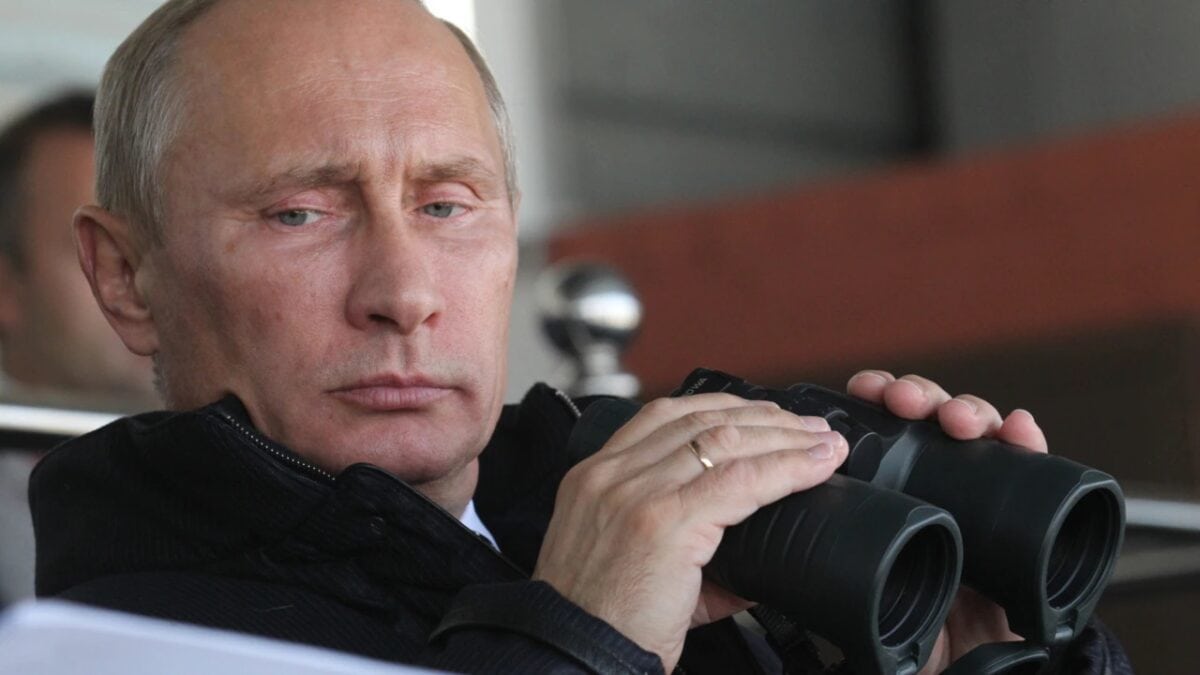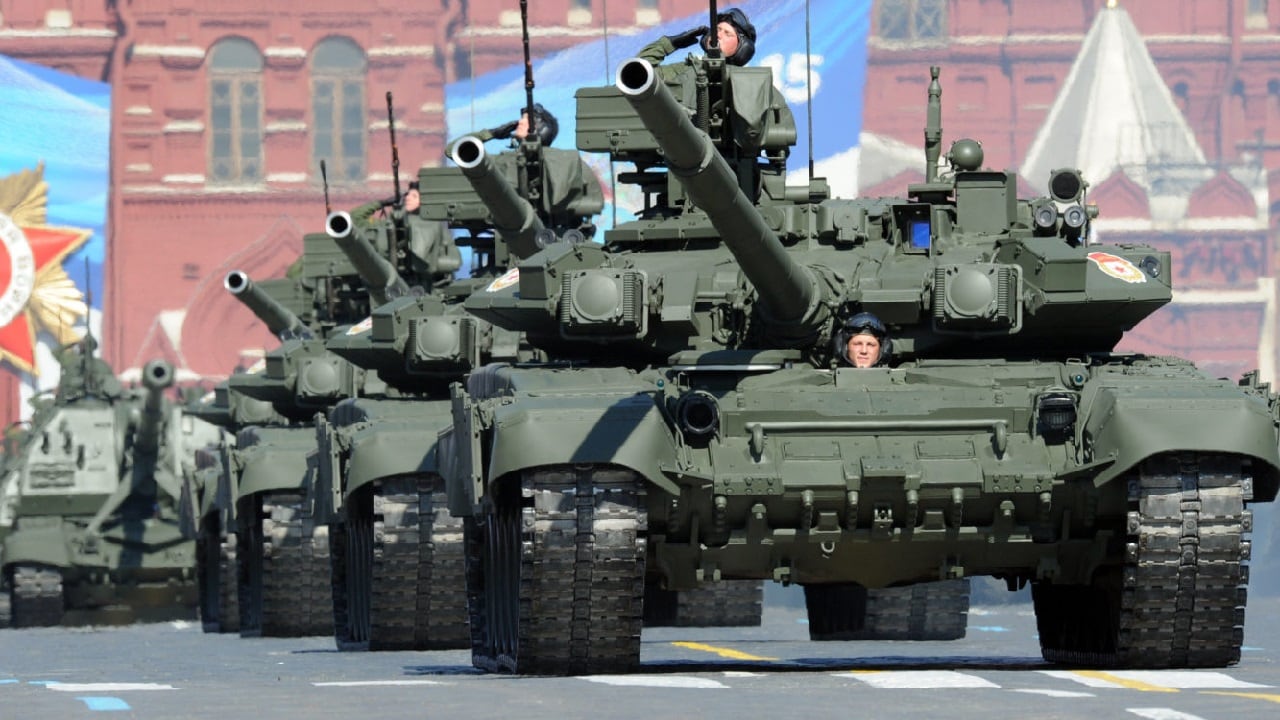Putin’s Real Goals Are Much Broader Than Many Realize – Explosions in the Russian-aligned breakaway region of Transnistria have raised the threat of a broader war. While Russia’s limited strength and difficulties in Ukraine make an invasion of Moldova unlikely, it is important to see that in the long-term, Russia clearly hopes to expand from Ukraine, subjugate Moldova, and pressure Romania and Bulgaria. The Black Sea States must therefore prepare for an extended confrontation.
Although Russia’s force constraints have limited its territorial achievements, Russia’s war aims remain unlimited. Putin and his inner circle of siloviki launched this invasion with a clear political goal: the integration of Ukraine and Belarus into a revived Russian empire. By the end of 2020, it had become apparent that the government in Kyiv had no interest in allowing the separatist enclaves in Donbas to exercise a veto over Ukrainian policy.
Volodymyr Zelenskyy was not a traditional post-Soviet oligarch. He represented the assertion of Ukrainian civil society against the standard elements that control the Kremlin’s erstwhile satellites. Growing Ukrainian military capacity, while insufficient to challenge the Russian Army, could jeopardize the Donetsk and Luhansk breakaway areas. And the apparent Nazism that infected Kyiv – for any individual who opposes Moscow’s rule over the entire Russian world must be a Nazi, the only enemy that threatened to destroy Russia apart from the Mongols – made Ukrainian aggression likely soon.
Putin chose to resolve the issue by force. However, he expected the Ukrainian government to be brittle. Mass on multiple fronts would paralyze Ukrainian command structures, while a lightning strike on Kyiv would prompt Zelenskyy, a comedian with no stomach for a fight, and at any rate, a Jew, not a Slav with psychological and emotional attachment to good Eastern European soil, to flee to Lviv or NATO territory. In turn, resistance would collapse. Russia’s puppet Victor Medvedchuk would enter Kyiv to great fanfare, announcing the denazification of Ukraine, and its integration into a Russian geopolitical bloc.
Belarus would fall next under the Putin bus. Ukraine’s capitulation would force Lukashenko’s Belarus to face facts. The West would not accept him after the 2020 protests. He would accept formal Russian control over Minsk, likely through the Union State.
The Black Sea coastline, however, remained Putin’s long-term objective. Moldova would have been his first target. Russia has controlled the breakaway Moldovan territory since its intervention in the 1992 war. However, its limited force presence – it has only 1,500 soldiers, while the Transnistrian military’s 5,000 regulars and 15,000 reservists are likely unfit for combat – prevented direct intervention. Like in Ukraine, Russia had to pursue what foreign policy types delicately termed a “hybrid” approach, or “control of the whole by control of the part.” Like in Ukraine, this was unsuccessful, although Moldova is far smaller and less important strategically than Ukraine. But with Ukraine under the Kremlin’s control, Putin hoped to bring Moldova in line next. It would swallow the country of 2.6 million, and give Russia a border with Romania, allowing it to pressure NATO more directly.
An attack on Moldova is unlikely now. Russia cannot take Mykolaiv, and in turn Odesa, making an overland assault on Moldova impossible. It lacks the amphibious capacity to lift more than two Battalion Tactical Groups in one assault. Russia could land south of Odesa, advancing into Transnistria and then Moldova. But this would leave its sea lines of communication and supply exposed to Ukrainian harassment, which will increase as Ukraine receives the anti-ship missiles that Mr. Zelenskyy has most reasonably sought from the US. The Moldovan Army has only 7,500 active-duty soldiers, but around 70,000 reservists, and its population shows no sign of desiring to capitulate to the Kremlin. Moldova would resist a Russian attack, receiving Ukrainian assistance, and likely do so successfully. Moreover, around a quarter of Moldovans hold a Romanian passport, while Romanians and Moldovans frequently work across their respective national border. An attack on Moldova, therefore, would raise the odds of Romanian entanglement, and in turn, a NATO response, which Russia cannot afford given its already insufficient combat power in Ukraine.
However, Moldova is Russia’s next target. While Putin has not achieved his initial objectives, his long-term goals remain unchanged. Russia is preparing to occupy Kherson Oblast, either annexing the regions outright or establishing puppet republics akin to the DNR and LNR. Its offensive in the east, while slow, is making progress, although a developing Ukrainian counterattack around Kharkiv may disrupt this. The most likely outcome is a military stalemate, whether Russia mobilizes or not on May 9th. But this stalemate simply presages another round of fighting, during which the Kremlin hopes to squeeze Ukraine economically and batter it into submission. If the Kremlin achieves its objectives in Ukraine, it will turn to Moldova. And pressure on Moldova will, for the reasons stated above, pressure Romania and with it, NATO.
The Black Sea States should act now, using the time Ukrainian resistance has bought them to better prepare their defenses. Three steps are necessary.
First, Romania and Bulgaria – under NATO auspices – should begin coordinating with Moldova to harmonize defense and civil planning. Romania should take the lead, given its border with Moldova and the cross-pollination of the Moldovan and Romanian populations, which speak the same language. This planning cannot escalate to an alliance relationship unless Moldova modifies its constitution and abandons neutrality. Moreover, Moldova is unlikely to conduct joint military exercises with NATO members. However, by putting plans in place, Romania, Bulgaria, and NATO more broadly can ensure their ability to coordinate a response to aggression against Chisinau.
Second, Romania and Bulgaria should prioritize long-range fires. The best way to prevent a Russian invasion is by disrupting Russian movements at range, either on land or at sea. The Romanian Armed Forces should procure anti-ship and ground attack cruise missiles capable of striking targets throughout the Black Sea and in southwestern Ukraine, in the event Russian forces conquer it. They should also expand their artillery forces. Moldova is around 120 kilometers across at its widest point if the sliver that is Transnistria is included. Long-range artillery, if coupled with proper spotting mechanisms, can blunt Russian advances that threaten to rip through and reach Romania.

Vladimir Putin. Image Credit: Russian Government.
Third, Romania and Bulgaria should integrate anti-air and anti-drone systems more heavily into their military formations, particularly at a devolved, mobile level. A Russian assault on Moldova will involve action against Romania, and likely against Bulgaria. And Russia will learn from its mistakes in Ukraine, integrating UCAVs into their maneuver forces more effectively. To ensure Romanian and Bulgarian maneuver forces survive, they must be able to withstand a long-term air campaign and consistent UCAV saturation.
Russia may or may not resolve the substantial military deficiencies that its invasion of Ukraine exposed. But Mr. Putin’s broad strategic objective of re-establishing the Russian empire, including its control of the Black Sea and complementary superior position in the Eastern Mediterranean, stays fully in place. The West has more than sufficient reason to understand this and should act accordingly. Now.
Seth Cropsey is the founder and president of Yorktown Institute. He served as a naval officer and as deputy Undersecretary of the Navy and is the author of Mayday and Seablindness.

